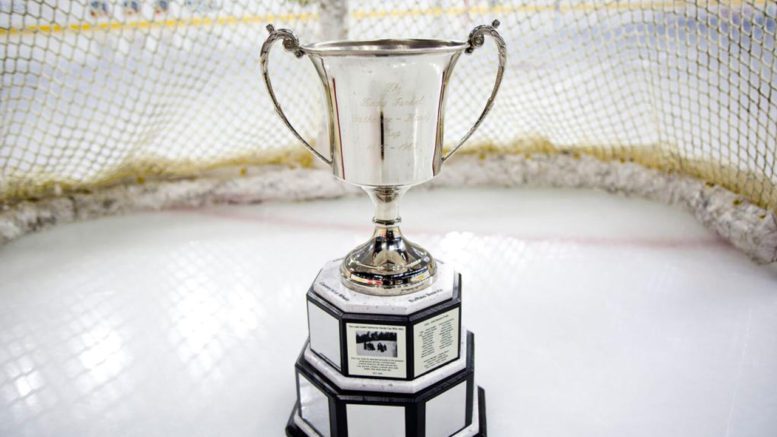The National Women’s Hockey League (NWHL) entered its Lake Placid, N.Y., bubble in late January with the hopes that one team would capture the Isobel Cup — instead, the action on the ice ended prematurely, and question marks regarding the league’s future have since become prominent.
Stakes were high for the NWHL’s bubble when the season was shortened to two weeks, with six teams vying for a spot in a semifinal game airing on NBC Sports.
Between media tensions, a global pandemic, a rushed schedule and the nature of women’s hockey being seldom funded – the bubble burst.
Benjamin Steiner, a Canadian journalist and host of the Puck Authority post-game show for the Toronto Six, covered the festivities as they happened from the bubble. Like the league itself, he was unable to see the conclusion of the condensed season.
“When things started to go bad, they just went off the rails. There was no proper communication, we didn’t know what was happening, and I don’t think the players were clear on what to do either,” said Steiner.
For the second consecutive year, the NWHL was unable to reward the league’s championship trophy — but unlike 12 months ago, the suspension of this season came within a protected bubble.
The Metropolitan Riveters, who many believed pulled out of the tournament in part for rookie Saroya Tinker’s safety on top of COVID-19 protocols, were first to leave with Connecticut Whale following shortly behind, leaving just four teams in the tournament.
A missed opportunity
With four teams left, and an already pressed season, the NWHL decided to suspend the season indefinitely after just days of action for a league that reached millions of viewers via its broadcasting on Twitch.
The stoppage of the tournament came just one day before the stage was set for the NWHL to be televised in front of a national audience on NBC Sports.
“I think it’s a big loss that they didn’t get on NBC Sports,” said Steiner. “It’s also going to scare a lot of other companies to host the NWHL because they can’t be trusted anymore.
“They’ve (NWHL) broken so much trust with not only broadcasters, but with sponsors. They’re lucky that they have this arrangement on Twitch, which anyone can stream — and they do sell ads with that.”
While the NWHL may have missed the opportunity of being featured on NBC Sports during its most recent bubble, the sudden suspension of the season may also harm potential future partnerships the league could have with other media outlets.
“I can’t see a broadcaster in the next few years with the current (NWHL) leadership wanting to put the NWHL on, even in a non-pandemic world,” said Steiner. “Even if I’m ESPN, or NBC, or Peacock, I’m not feeling confident about putting the NWHL on my service.”
New kids on the block
One team that was hit the hardest by the news was the Toronto Six, the league’s newest franchise who was sitting on top of the standings and had a chance to help grow the game by showing that allowing more players to enter the league is grounds for good hockey to be played.
Despite the on-ice success of the Six and the team’s strong social media engagement, the apparent disconnect between the league’s lone Canadian franchise and the rest of the NWHL has created a troubling dynamic from a marketing perspective moving forward.
“Their (Toronto Six) Twitter is run like a Canadian hockey team, but the actual broadcast and representation of the NWHL is run like the NFL,” Steiner stated. “It feels like an American franchise in Canada, rather than a Canadian franchise in an American league.”
Life inside the bubble
Speculation about the bubble’s mishandling was cause for many to believe that is the reason the tournament was suspended. Some players were told they could not leave their hotel rooms or see their teammates, while others were leaving to get food and seeing people even off the roster.
“It was called a bubble and clearly wasn’t a bubble — it was a protected environment per say,” said Steiner. “The Connecticut Whale were posting photos of themselves on the main street in Lake Placid. I know for a fact that the people in Lake Placid were not pleased (with that),” Steiner said.
Confidentiality for player safety was an obvious concern. Still, the disclosure of COVID-19 positive cases or test results was also kept hidden by some teams, which also caused speculation regarding the exact reason for pulling out of the bubble.
For many, the worst part of the shutdown was the lack of representation for women in hockey. Plenty of media members already travelled to Lake Placid on their own time and money, covering the games unpaid, just to grow the game that was already underfunded.
Though the league has not announced a comeback just yet, women’s hockey is still being played by the Professional Women’s Hockey Players Association (PWHPA) on their Dream Gap tour – a union of women’s hockey players who do not play in a professional league as their goal is to have one unified league for all women in hockey.
While fans, journalists and players alike await the announcement of the NWHL’s return to play, the PWHPA has seemingly filled the void for women’s hockey action.
The PWHPA made history on Feb. 28, playing the first-ever women’s hockey game at Madison Square Garden in New York City — a game between New Hampshire and Minnesota, and one that was broadcasted on the NHL Network in the United States and on Sportsnet in Canada.
UPDATE – March 8th, 2021: The NWHL has announced the remainder of the Isobel Cup will take place March 26-27 at Warrior Ice Arena in Brighton, Mass.

